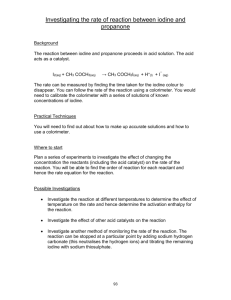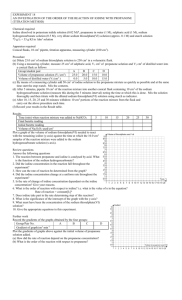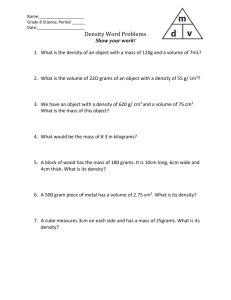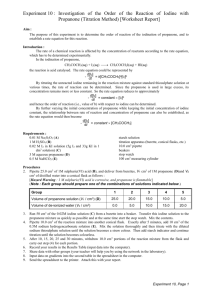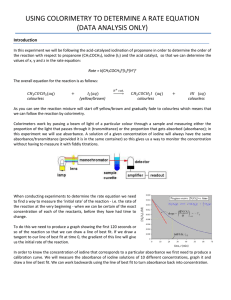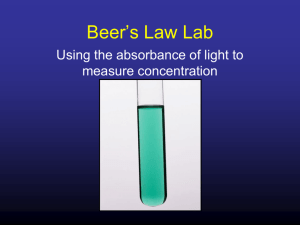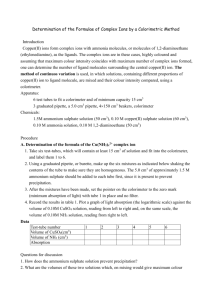Practical 3 - A-level chemistry
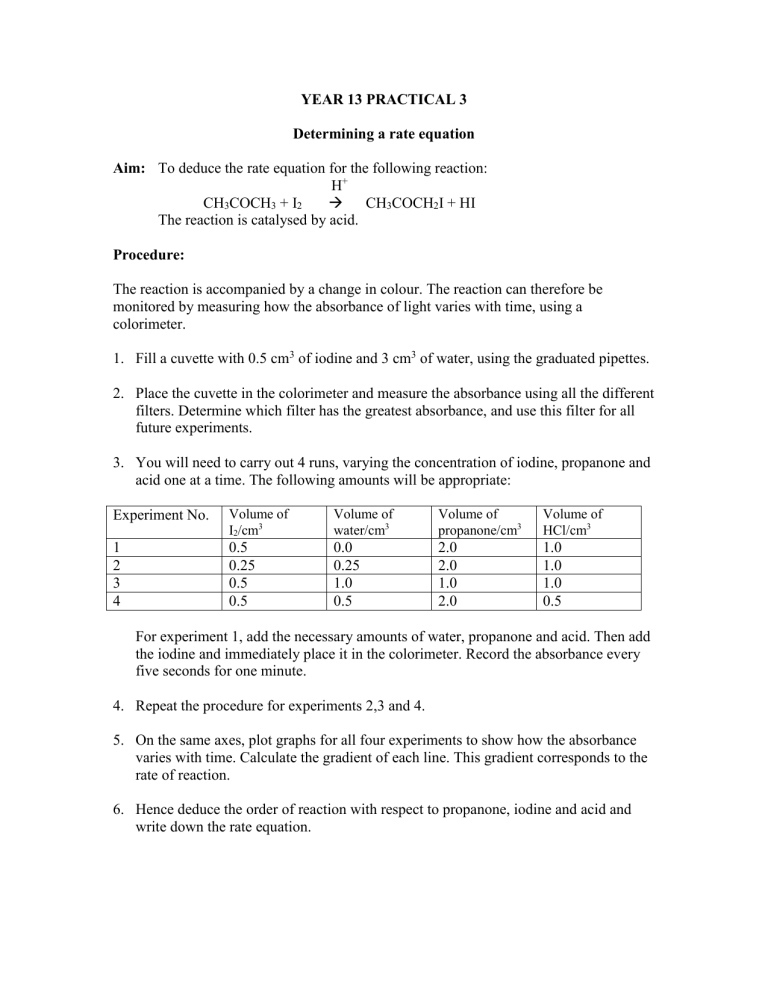
YEAR 13 PRACTICAL 3
Determining a rate equation
Aim: To deduce the rate equation for the following reaction:
H +
CH
3
COCH
3
+ I
2
CH
3
COCH
2
I + HI
The reaction is catalysed by acid.
Procedure:
The reaction is accompanied by a change in colour. The reaction can therefore be monitored by measuring how the absorbance of light varies with time, using a colorimeter.
1.
Fill a cuvette with 0.5 cm 3 of iodine and 3 cm 3 of water, using the graduated pipettes.
2.
Place the cuvette in the colorimeter and measure the absorbance using all the different filters. Determine which filter has the greatest absorbance, and use this filter for all future experiments.
3.
You will need to carry out 4 runs, varying the concentration of iodine, propanone and acid one at a time. The following amounts will be appropriate:
Experiment No. Volume of
I
2
/cm 3
1 0.5
Volume of water/cm 3
0.0
Volume of propanone/cm 3
2.0
Volume of
HCl/cm 3
1.0
2
3
4
0.25
0.5
0.5
0.25
1.0
0.5
2.0
1.0
2.0
1.0
1.0
0.5
For experiment 1, add the necessary amounts of water, propanone and acid. Then add the iodine and immediately place it in the colorimeter. Record the absorbance every five seconds for one minute.
4.
Repeat the procedure for experiments 2,3 and 4.
5.
On the same axes, plot graphs for all four experiments to show how the absorbance varies with time. Calculate the gradient of each line. This gradient corresponds to the rate of reaction.
6.
Hence deduce the order of reaction with respect to propanone, iodine and acid and write down the rate equation.


